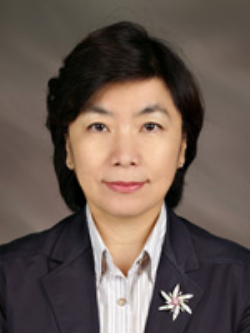
We use the word “Image” not only for images as a scenery but also in various ways. We say that “someone has a good image” as a judgement of character. In this circumstance, the word “image” is used to show the appearance of one person, not the human nature. The essence of human nature is hidden in the profound, which makes people judge others by appearance, in other words, the outer image, most of the time. This is how the “simulation phenomena” occurs, as Jean Baudrillard theorized.
The most problematic sociocultural simulation phenomenon in today’s Korean society is plastic surgery. It has now become easy to mimic movie stars’ ideal figure. Plastic surgery is the answer – eye job, jaw job and liposuction for example. Recently in a Korean television show “Martian X-file,” a woman who calls herself a plastic surgery addict made a guest appearance. She mentioned that she had a total of 120 surgeries and medical treatments including injections for seven years.
At this point, the simulation phenomena develop continuously, with the duplication replacing the original, acting as if it were always the original persona. People change their image so easily as if they erase and rewrite what was written on a palimpsest. Even if a person erases what was written on a palimpsest, the formerly written content cannot be erased off completely, and leaves an illegible trace. That is to say, the man-made image they get hinders the innate atmosphere and characteristics people have in themselves.
This is when we face the primitive question, “What is the relationship between image and the essence of human nature?” According to Aristoteles’s thesis that thinking is impossible without an image, image is also a spiritual picture. When we think of an object or a person, each image must contain a unique feature and tone.
Yet, we are living in a wave of consumer capitalism where computer technology duplicates similar images. Just like plastic surgery which deteriorates the original image, if the images keep on duplicating itself, the distance between image and the essence of human nature will never narrow down. If the simulation phenomena intensify, the world will be an overflow of cloned images.
Along with the development of digital culture, image has become more powerful than ever. Less people read paper books, and our vision seeks image beyond description. The opportunity to sketch a spiritual image in one’s brain is decreasing, as people once used to visualize each one’s thoughts along own perspective and experience through reading. Autumn is in the air. Autumn is the most appropriate time for us to go into my profound and to reflect our essence of existence and to draw our own spiritual picture.
* Professor Lee Suan received her Ph.D from Johann Wolfgang von Goethe University Frankfurt am Main in Germany for cultural sociology. She is currently an Associate Professor of Ewha Institute for the Humanities and her main publication includes “Cultural Sociology of Image.”
Professor Lee Suan
evoice@ewha.ac.kr

